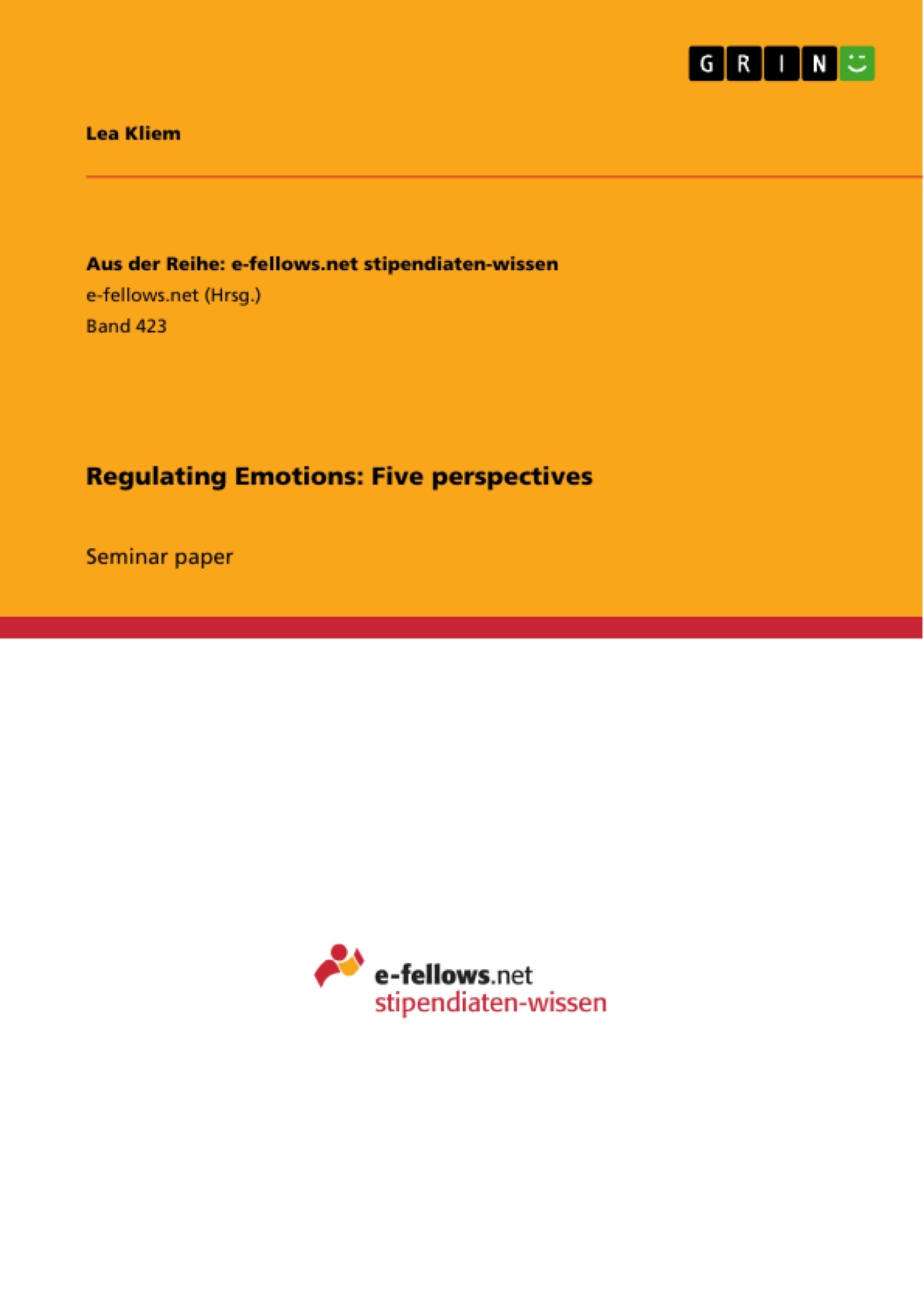Looking at emotion regulation from five different perspectives, this paper provides an overview of the broad field of emotion regulation. As suggested by Cornelius (1995), the perspectives considered include the Darwinian, the Jamesian, the Cognitive and the Social Constructivist perspective. Additionally, as the field of neuroscience recently made some important contributions to emotion regulation, it is also considered as a fifth perspective.
Inhaltsverzeichnis (Table of Contents)
- Introduction
- Emotion regulation
- Darwinian Perspective
- Jamesian Perspective
- Cognitive Perspective
Zielsetzung und Themenschwerpunkte (Objectives and Key Themes)
This paper aims to provide an overview of the broad field of emotion regulation, examining it from five different perspectives: Darwinian, Jamesian, Cognitive, Social Constructivist (not included in this preview), and Neuroscience. The paper explores how individuals attempt to influence their emotional experiences, focusing on the various strategies and mechanisms involved in regulating emotions.
- The evolution of emotions and their regulation
- The role of bodily changes in shaping emotional experience
- The impact of cognitive appraisals and reappraisals on emotional responses
- The influence of neuroscience on understanding emotion regulation
- The interplay between conscious and unconscious emotion regulation
Zusammenfassung der Kapitel (Chapter Summaries)
Introduction: The paper begins by introducing the concept of emotion regulation and its significance in controlling emotions. It highlights the complexities of conscious and unconscious regulation, setting the stage for the exploration of different perspectives on this multifaceted process.
Emotion regulation: This section defines emotion regulation and explains how it encompasses various aspects of emotional experience, including situation, attention, appraisal, behavior, and physiology. It introduces the distinction between antecedent-focused and response-focused strategies for regulating emotions.
Darwinian Perspective: This section explores Darwin's theory of emotion, emphasizing the role of evolution in shaping emotional expressions and their regulation. It highlights the link between facial expressions and emotional experience, suggesting that voluntary facial actions can impact underlying emotions. This section also explores the concept of 'Display rules' and their influence on emotional expression across cultures.
Jamesian Perspective: This section focuses on James's theory, emphasizing the role of bodily changes, particularly those related to the autonomic nervous system, in creating emotional feelings. It examines how emotional regulation can be achieved through influencing physiological responses, potentially through techniques like exercise, relaxation, or touch.
Cognitive Perspective: This section delves into the cognitive theory of emotion regulation, focusing on the concept of cognitive change. It discusses appraisal theories, emphasizing the role of cognitive appraisals in determining emotional states. This section explores the different understandings of appraisal, including Lazarus's view of a deliberate cognitive process and Zajonc's view of an automatic affective reaction. The section then discusses reappraisal as a form of cognitive change and its impact on emotional experience and behavior.
Schlüsselwörter (Keywords)
Emotion regulation, Darwinian perspective, Jamesian perspective, Cognitive perspective, Neuroscience, Appraisal theories, Reappraisal, Facial feedback hypothesis, Display rules, Physiological responses, Autonomic nervous system, Evolutionary pressures, Cognitive change, Antecedent-focused strategies, Response-focused strategies.
- Quote paper
- Lea Kliem (Author), 2011, Regulating Emotions: Five perspectives, Munich, GRIN Verlag, https://www.grin.com/document/192865



